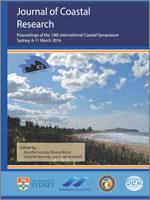Hesp, Patrick A. and Smyth, T.A.G., 2016. Surfzone-Beach-Dune interactions: Review; and flow and sediment transport across the intertidal beach and backshore. In: Vila-Concejo, A.; Bruce, E.; Kennedy, D.M., and McCarroll, R.J. (eds.), Proceedings of the 14th International Coastal Symposium (Sydney, Australia). Journal of Coastal Research, Special Issue, No. 75, pp.8–12. Coconut Creek (Florida), ISSN 0749-0208.
The original wave-beach-dune model (Hesp, 1982) stated that in the medium to long term, modal dissipative beaches display maximum onshore wave driven sediment transport, maximum aeolian transport off beaches, the largest foredune heights and volumes, and the largest Holocene dunefields. Modal reflective beaches display the opposite, while modal intermediate beaches display a trend in these from relatively high to relatively low sediment transport, foredune volumes, and Holocene barrier volumes with a trend from dissipative to reflective. New Computational Fluid Dynamic (CFD) modelling of flow and calculation of sediment transport over three modal beach types presented here shows that the original conceptual ideas and field data regarding aeolian sediment transport are correct. Dissipative beaches show the greatest long term potential for sediment delivery to the backshore whilst reflective beaches display the least, with a trend from relatively high to low in the intermediate beach state range.





